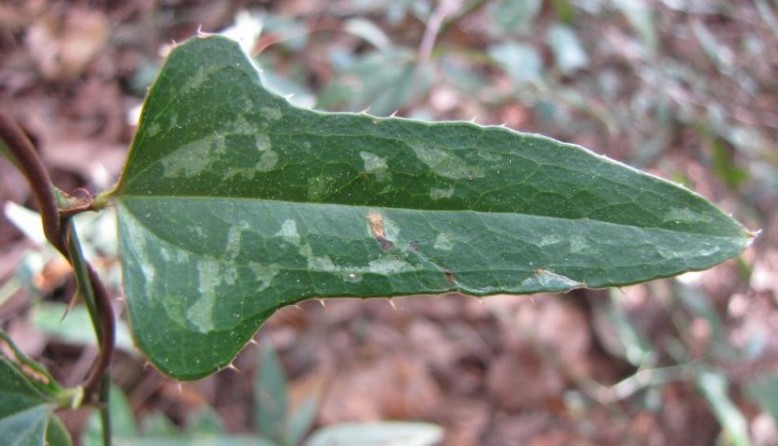In the Vines of Mistaken Identify, we’re exploring the different types of vines commonly called “invasive” around Nassau County. Rather, in fact, these vines are not invasive and many of them are native too, which provides amazing benefits to our ecosystem and environment. Our current blog explores Greenbriar (Smilax spp.).
It’s Important Value
Have you ever walked through a natural area and you’ve been snagged by a prickly vine? Chances are it was a type of Greenbriar/Smilax. Twelve Smilax species exist in Florida and we have a mixture of native and non-native species, but nine are considered common. There is no doubt Smilax plays a critical role in our landscapes because it provides food and shelter for a vast array of wildlife, including valuable pollinators and other birds. Additionally, historic uses of Smilax have included medicines and dyes.
Use in the Landscape
It’s not common to see briars within the landscapes for ornamental purposes because they may be unruly – but they are not invasive. It is a formidable landscape opponent because of its ability to establish itself in the most unfavorable, abhorrent landscape conditions. It is #1 (in my opinion) when it comes to landscape adaptability. I have seen smilax used intentionally within a landscape because of its wildlife value, but much control was given to it to keep it from spreading to other parts of the landscape.
Control Recommendation
Removal of smilax is difficult because it creates large underground tubers, which can lay dormant for long periods before growing again. Some homeowners removed hundreds of pounds of tubers in hopes of ridding their properties of smilax to no avail. In addition, since smilax is a marvelous tasty snack for our avian friends, their friendly deposits spread seeds proliferate their spread. Nonetheless, homeowners can remove smilax populations. For small, young smilax they can easily be hand-pulled, but once they’ve established and developed their tuberous root system it’s difficult to do mechanical controls. According to a UGA article, the cut-stump method could be used, but you need to use 41% or greater glyphosate. Spray an additional 10% solution to reemerged sprouts.
Identification
Since 12 species of smilax thrive within the state, it can be difficult to differentiate between the 12 species – but not all are present in Nassau County. Despite their differences, common traits between species exist.
- Size/Form: The woody vines grow upwards into the canopies of trees, reaching heights of 60 – 100 feet long. Branches are multi-trunked or clumping stems.
- Leaf: The leaves are opposite/sub-opposite arranged with dentate leaf margins. The leaves provide an orange fall color but aren’t typically considered showy.
- Bark: Smooth on younger stems. Older stems have tight, exfoliating bark.
- Fruit: 3-6″ pod-like fruits that are a brown color and persist on the plant.
- Flower: Summer, showy flower with a yellowy/orange color.

Credit: Lynn Proenza
For More Information
Follow the Vines of Mistaken Identity Blog Series
Upcoming Horticulture Programs
 0
0
